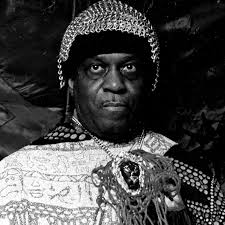Producer/engineer Young Guru, mulling tradeoffs at the mixing console. Image via massappeal.com.
When we discuss art, it’s natural for us to employ evaluative language. Doing so, however, often overlooks the fact that evaluative language only points back at us, the audience. It doesn’t point at the work. We can argue about the best Ella Fitzgerald performance or Joni Mitchell song, but those arguments only establish the taste of those in conversation. It does little to illuminate what the artists themselves are up to.
Nevertheless, we need language with which to talk about art. For example, when I read a student work, and it’s not working for me, I need to be able to talk about why in terms that are concrete, beyond dispute. One way to do that is to describe my experience of the work. “I was confused on page four because . . . .” A writer can hardly disagree with such a statement from a reader. She can’t say, “No, you weren’t confused.” The objective nature of the conversation helps keep things clear for all.
Another way to talk in concrete terms is to discuss the tradeoffs made by the artist. Even when two people disagree on a work’s success or failure, they can agree on the tradeoffs that were made and what resulted from those tradeoffs.
For instance, in my posts about musical time, I listed some tradeoffs that are made when drumming becomes rounder (more even) or less round (more uneven).
Whether or not I can persuade you that Ringo Starr’s sense of time is better than a drum machine’s (which is really a conversation about my listening), we can agree that Ringo’s imperfect time-keeping infuses the Beatles with a certain vulnerability that a drum machine cannot. Likewise, we can agree that if the Beatles had used a drum machine that rendered perfectly even time, the result might have been something less vulnerable and more invincible.
Tradeoffs, thus
- Provide concrete points of reference for people who may disagree as to a work’s success or failure.
- Help us remember that creativity is all about choices.
The language of tradeoffs thus help us distinguish between conversations about the artist’s choices from conversations about our response to those choices. The different tradeoffs each of us might make reflect differences of intuition and taste.
The language of tradeoffs therefore helps us take responsibility for how we receive the work.
Thank you for reading.





































